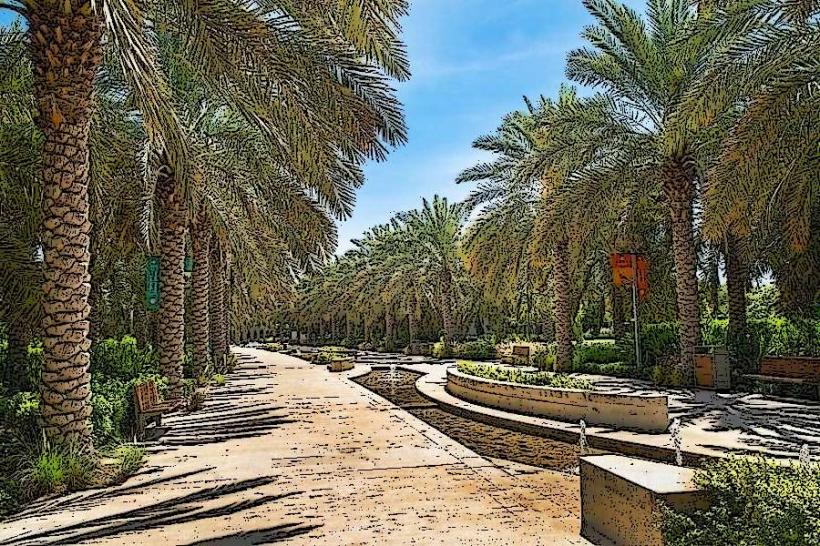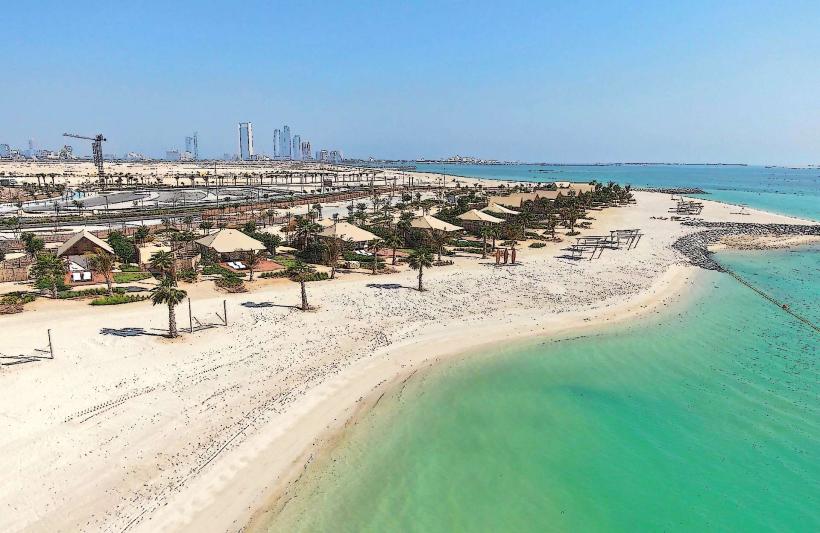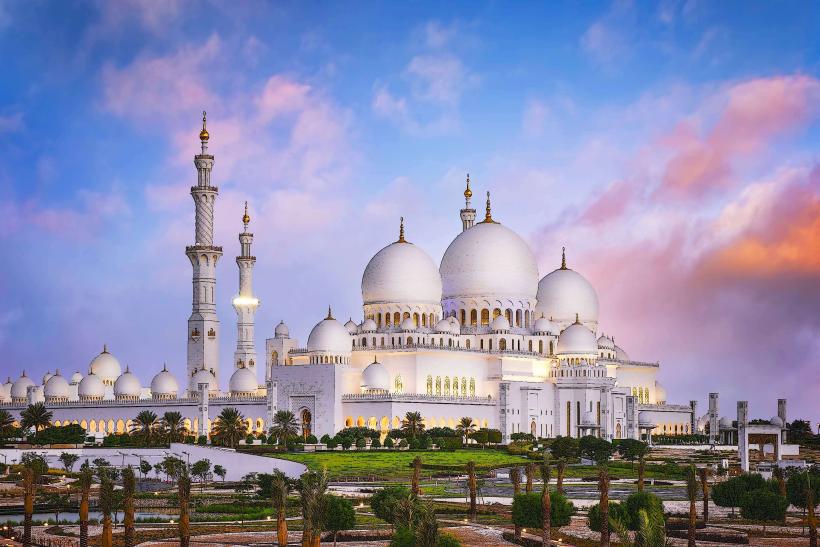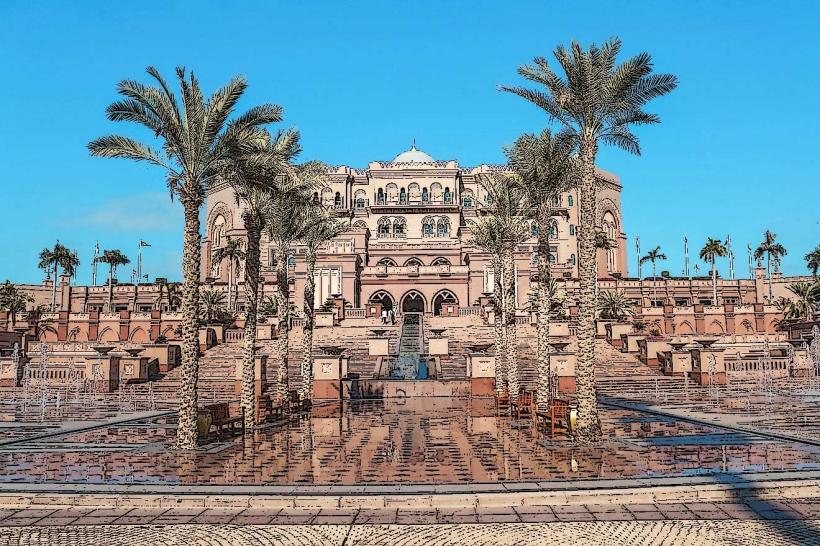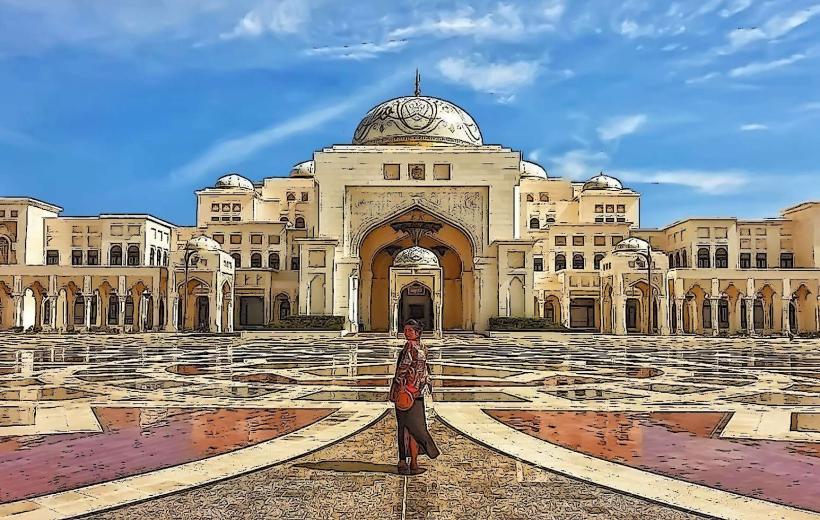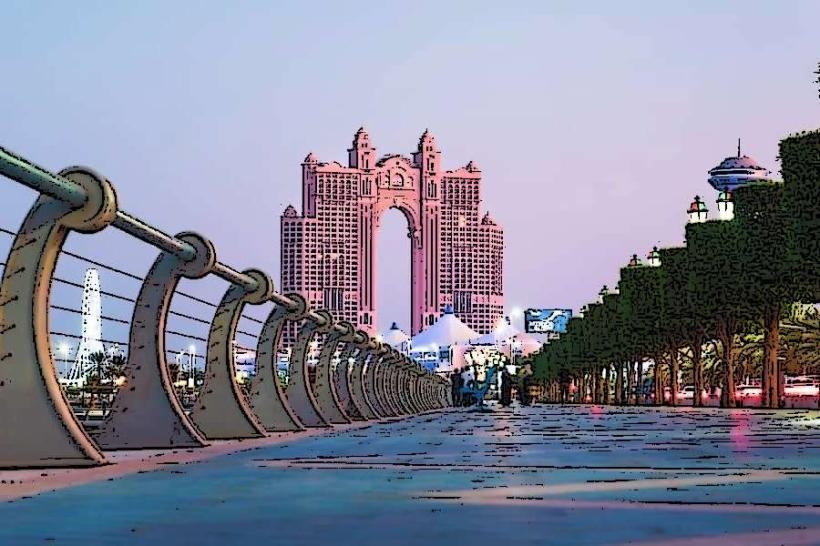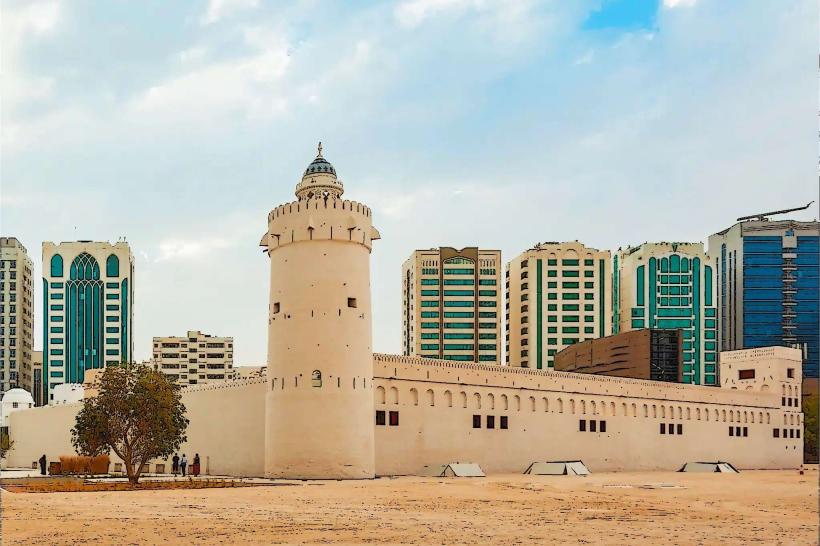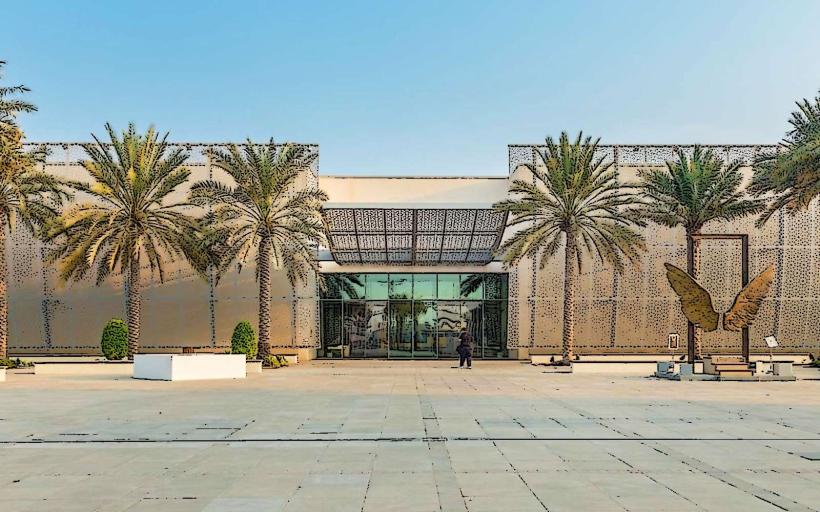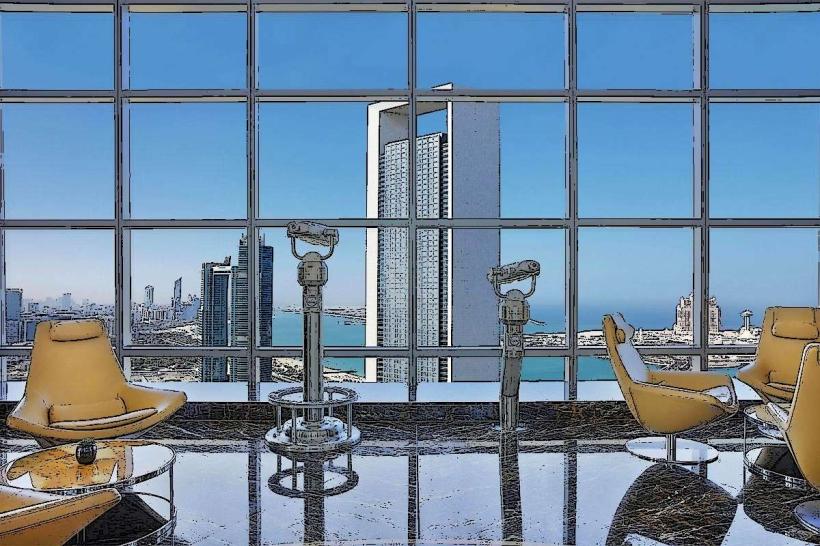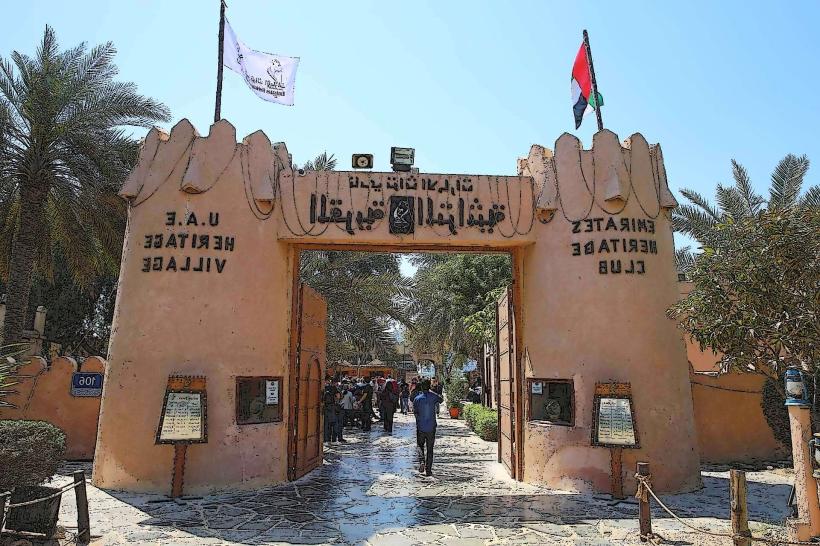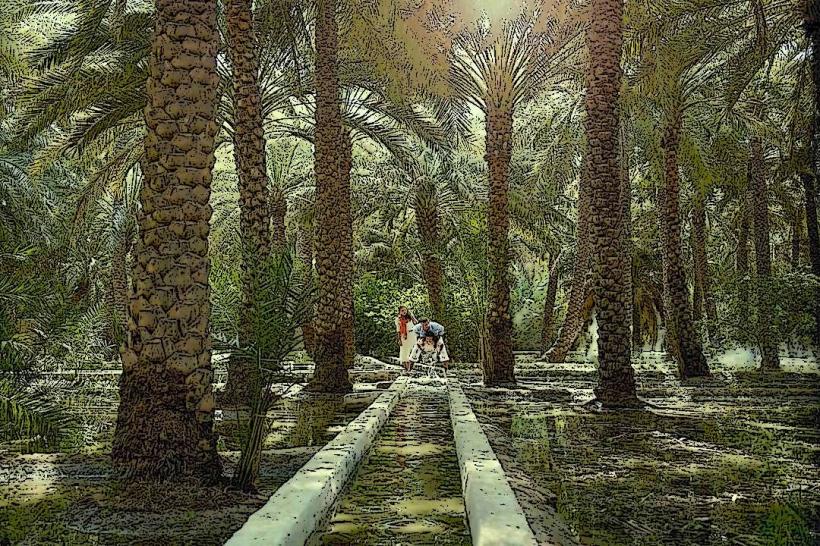Information
Landmark: BAPS Hindu MandirCity: Abu Dhabi
Country: United Arab Emirates
Continent: Asia
BAPS Hindu Mandir, Abu Dhabi, United Arab Emirates , Asia
Overview
As it happens, The BAPS Hindu Mandir, Abu Dhabi’s first traditional Hindu temple, stands in the UAE as a symbol of cultural harmony, religious tolerance, and spiritual unity, its white stone walls glowing softly in the desert sun, also the Bochasanwasi Akshar Purushottam Swaminarayan Sanstha (BAPS) built the temple, crafting it as a stunning blend of traditional Indian architecture, rich cultural symbols, and stone carvings so detailed you can trace each petal with your fingertip.In Abu Mureikha, just off the busy Abu Dhabi–Dubai highway (E11), the temple stands as a spiritual home for the UAE’s Hindu community and opens its doors to visitors of every background, then on February 14, 2024, it opened its doors, a clear milestone in the region’s push for religious inclusivity-the warm echo of voices filling the hall said as much.The temple’s design reflects traditional Indian architecture, built in line with the ancient Hindu Shilpa Shastras, whose rules shape its sacred geometry, perfect balance, and stone carvings as delicate as lace, then it’s carved entirely by hand from solid stone, with no steel beams or concrete hidden inside.The structure blends styles from across India, from the stepped roofs of the south to the carved stone pillars of the north, creating a vivid portrait of Hindu heritage, alternatively the temple’s built from pink sandstone quarried in Rajasthan, India-a stone prized for its strength and warm, rose-colored glow.Italian marble gleams under the light, while delicate carvings trace graceful patterns across the temple’s walls and doorways, adding elegance inside and out, furthermore engineers built the foundation and frame to stand firm in the UAE’s harsh desert heat, all while keeping the clean, graceful lines of its traditional design.Sacred Carvings and Symbols The walls and pillars glow with intricate carvings-Hindu deities frozen mid-blessing, mythic battles in swirling motion, and delicate lotus patterns etched deep into the stone, at the same time carvings from the Ramayana, the Mahabharata, and other Hindu scriptures cover the walls, turning the temple into a vivid, living reflection of Hindu philosophy and values, for the most part Seven towering spires, or shikhars, rise like sentinels, each representing one of the UAE’s seven emirates and reflecting the bond between the temple and the nation, after that step inside and you’ll find the temple alive with devotion, its halls honoring Hindu deities such as Lord Swaminarayan, Lord Krishna, Lord Rama, Lord Shiva, Goddess Durga, and Lord Ganesha, their statues gleaming in the soft glow of oil lamps.Each deity’s shrine is richly detailed, from the carved lotus petals to the faint scent of sandalwood, inviting devotees to kneel, whisper their prayers, and seek blessings in a calm, sacred space, after that every day, the temple holds aarti with flickering oil lamps, sings bhajans, and shares spiritual discourses, all in keeping with time-honored Hindu tradition.All year long, special pujas and vibrant festivals fill the air with music and incense, drawing thousands of devoted visitors, to boot in the quiet meditation hall, visitors settle into stillness, breathing in the faint scent of sandalwood as they find peace and turn inward for spiritual reflection, occasionally Visitors and devotees can join educational programs that share Hindu values, explore its philosophy, and bring cultural traditions to life-sometimes with the scent of incense curling in the air, in turn community and Social Services The temple isn’t only for prayer-it’s where neighbors gather for food drives, language classes, and a warm cup of tea shared after a long day, slightly often It delivers food, offers healthcare support, and brings vital humanitarian aid-like warm meals to families in need-showing its deep commitment to selfless service and the well-being of the community, and the temple welcomes everyone-no matter their faith or nationality-and encourages lively conversations and shared traditions, much like the warm scent of incense drifting through its open courtyard.Volunteers and guides share vivid stories and clear explanations of Hindu traditions, turning the locale into both a learning experience and a moment of quiet reflection, alternatively cultural exhibitions feature vibrant displays that highlight India’s spiritual heritage, trace the story of Hinduism, and reveal the meaning behind the temple’s construction, from ancient carvings to the scent of fresh marigolds.Shining digital screens and vivid audio-visual shows draw visitors in, helping even those contemporary to Hindu traditions feel at home in the temple, furthermore the temple grounds feature quiet gardens, a bustling cultural center, a cozy bookshop, and a vegetarian restaurant where you can smell fresh herbs drifting from the kitchen, creating a welcoming spot for both families and visitors.In the kids’ zone, young visitors dive into hands-on games and puzzles that make learning Hindu values lively and fun, then visitors should dress modestly and respectfully, with shoulders and knees covered-think light trousers and a loose shirt on a warm day.You can take photos for personal use, but filming professionally needs approval first, not only that open every day, though prayer times and visiting hours can shift-sometimes the doors stay shut until the bells finish ringing.Inside the temple, keep your voice down and show respect; slip off your shoes at the door before stepping onto the cool stone floor, consequently the BAPS Hindu Mandir rises as a powerful symbol of unity between India and the UAE, its white stone walls echoing the deep diplomatic and cultural bonds the two nations share.It also shows the UAE’s dedication to religious tolerance, creating a space where Hindu traditions can thrive beside the call to prayer and the region’s many faiths, at the same time this temple serves as both a region of worship and a cultural landmark, offering a glimpse into Hinduism’s rich spiritual heritage, occasionally The scent of incense drifts through its open doors, inviting people of every background to share in its calm, sacred air.
Author: Tourist Landmarks
Date: 2025-09-20





